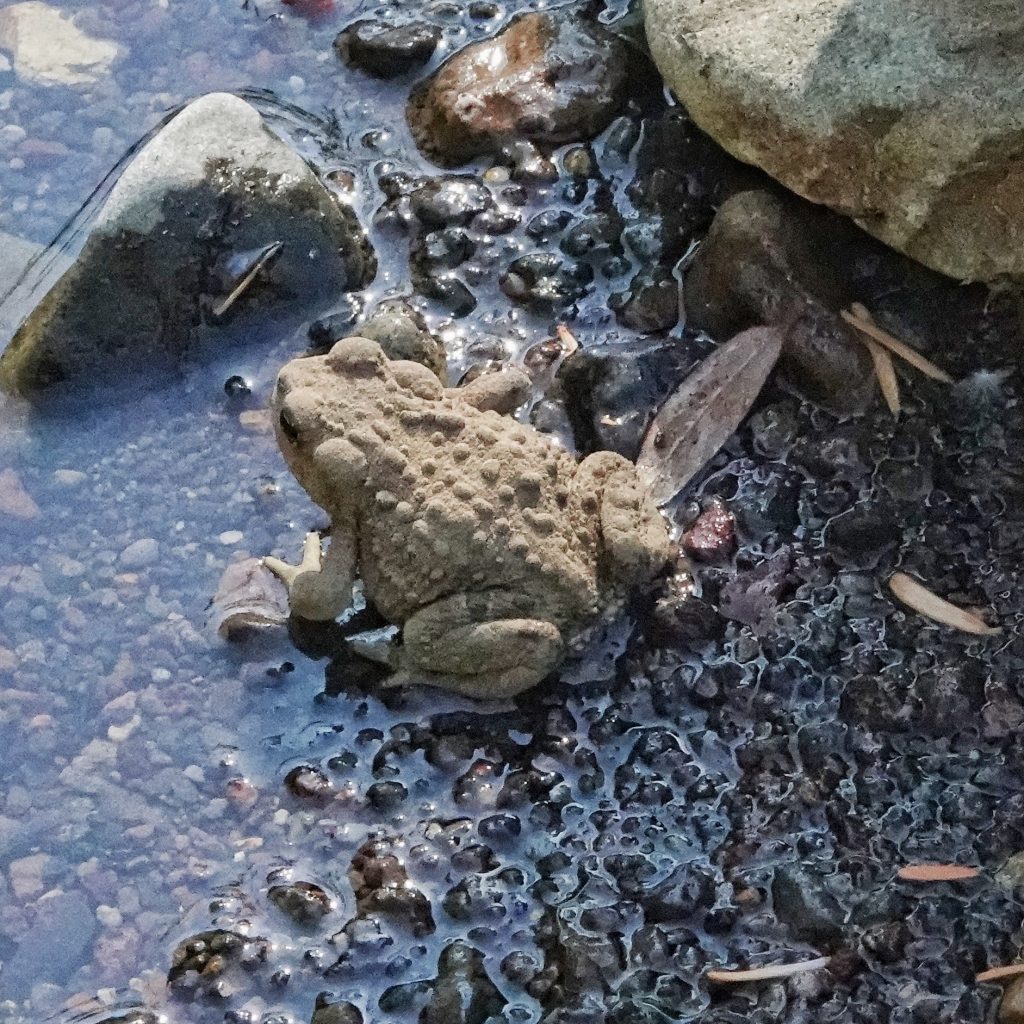
I had no idea until I started researching this that they had revised the taxonomy and nomenclature of toads (in fact the amphibians in general- Frost et al.; 2006), and it kind of made me feel like the world was passing me by. When I was a little kid, probably 7 or 8, my dad brought home some toads from the desert for me to keep as pets. I loved those homely little critters, and I loved watching them capture the meal worms I fed them. I never knew for sure what kind of toads they were, but I was a nerd even then, and I looked up some information on toads (in those pre-Google resources called encyclopedias), which was the first time I read about scientific names. I seem to remember concluding that they must have been californicus, on the spurious basis that we lived in California, but what I remember clearly was the generic name Bufo. It just sounds like what toads should be called, and I now know that it is Latin for ‘toad’. But now most New World toads are in Anaxyrus, which seems to be from the Greek word for trousers, and it just doesn’t have the same ring to it.
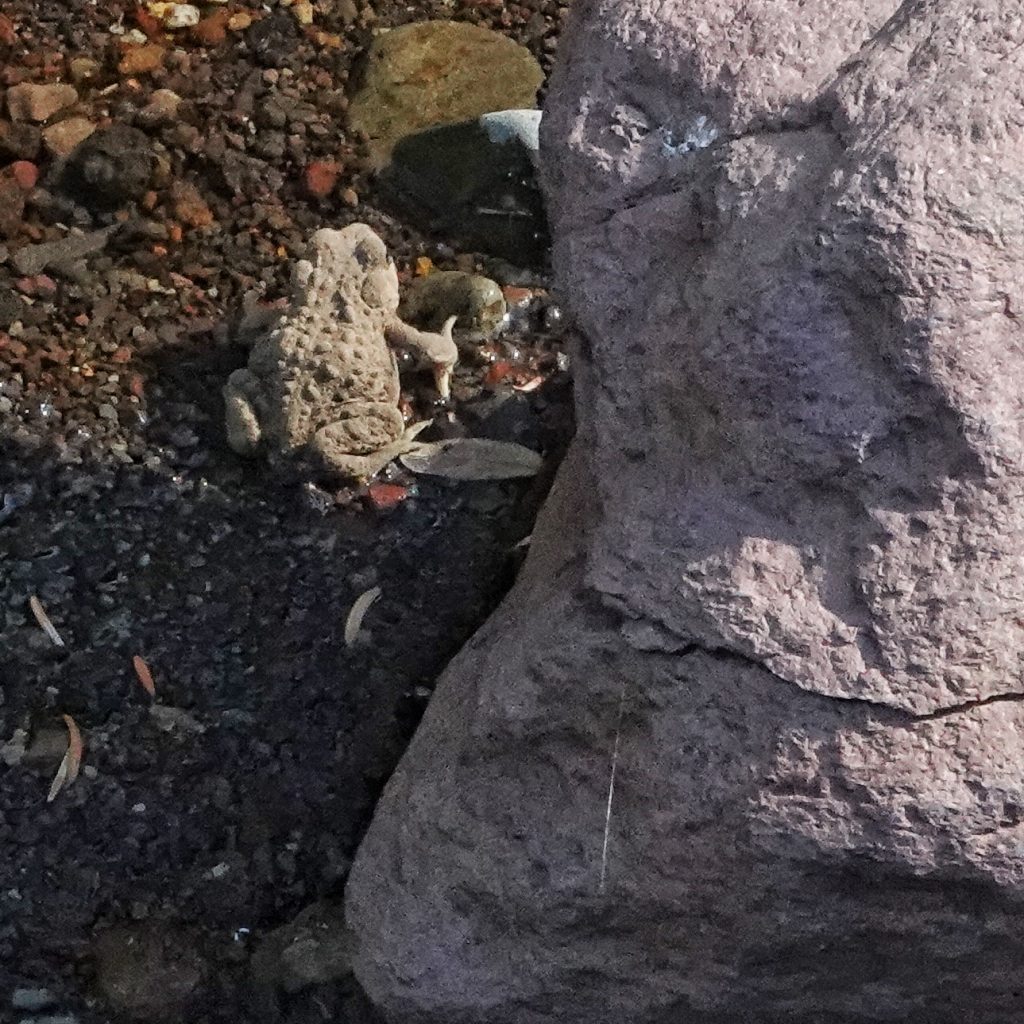
And I still think toads are very cool! How can you not love critters that secrete toxins onto their skin to avoid being eaten. Both granular glands in the skin of larvae (which become warts in adults) and the paratoid glands produce bufotenine, bufogenin, and other bufotoxins, as well as dopamine, serotonin, epinephrine and norepinephrine, and indolealkylamines. These chemicals often taste bad, as well as having a strong effect on the central nervous system, peripheral vascular system, and the heart, and bufotenin and indolealkylamines are hallucinogens as well. These effects are more pronounced in predators that chew on the toads to ingest them, because the chemicals are easily absorbed by mucus membranes. Since the chemicals are mostly in and on the skin, many predators (especially corvids) get around them by eviscerating their catch, basically skinning them before consumption.
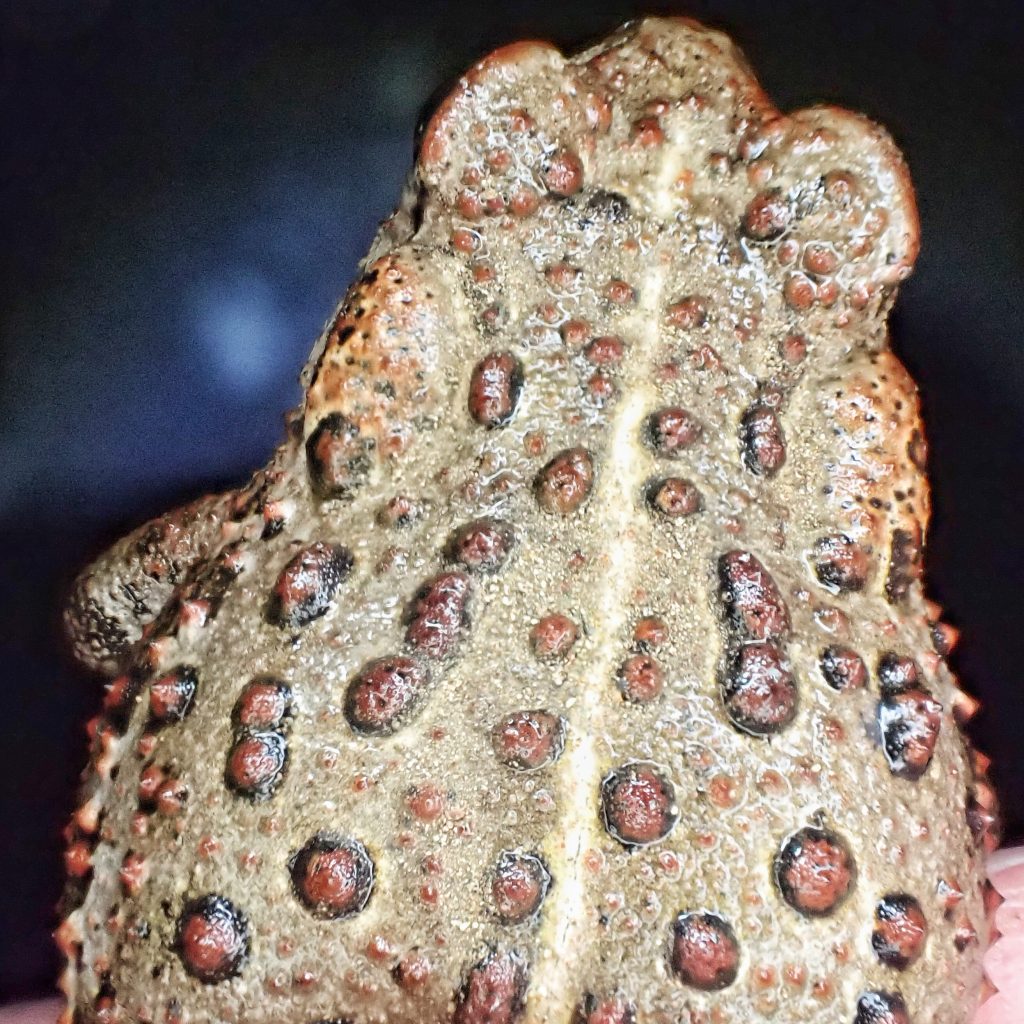
Based on a study by Pearl/Hayes (2001), that showed significant predation of Anaxyrius boreas toadlets by Rana pretiosa (Oregon Spotted Frogs), it seems likely that either the frogs have some resistance to the skin toxins of the toads (it should be noted that other species of frogs seldom target Western Toads), or that in the immediate post metamorphosis period for toadlets their granular skin glands are not yet producing at full capacity. If that is the case it could be particularly problematic for toad populations, since toadlets are often in groups in the weeks directly after metamorphosis, and the lack of chemical defenses would make them vulnerable to a wide variety of predators.
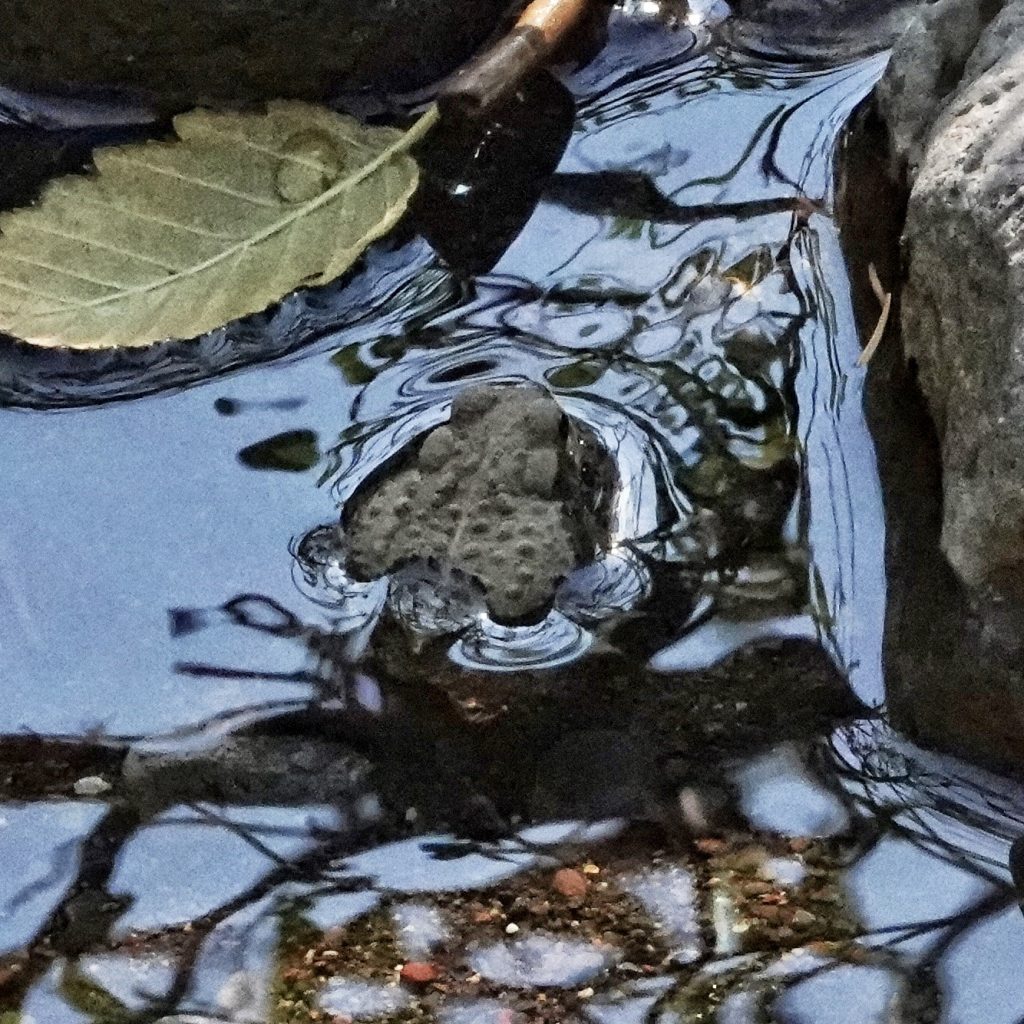
Western Toad tadpoles use primarily chemical cues to differentiate between potential predators and animals that could eat them, like most fish and Roughskin Newts, but do not find them palatable. A study by Kiesecker et al. (1996) found that when limited to visual clues, tadpoles did not avoid predators like Giant Water Bugs and backswimmers, but even without visual cues they could sense them from chemical signals and get out of harms way. In another study (Hews; 1988) it was shown that when conspecific tadpoles were being attacked they gave off chemical signals which caused other tadpoles to avoid that area, although they didn’t respond to alarm signals given off by tadpoles that were not their species.
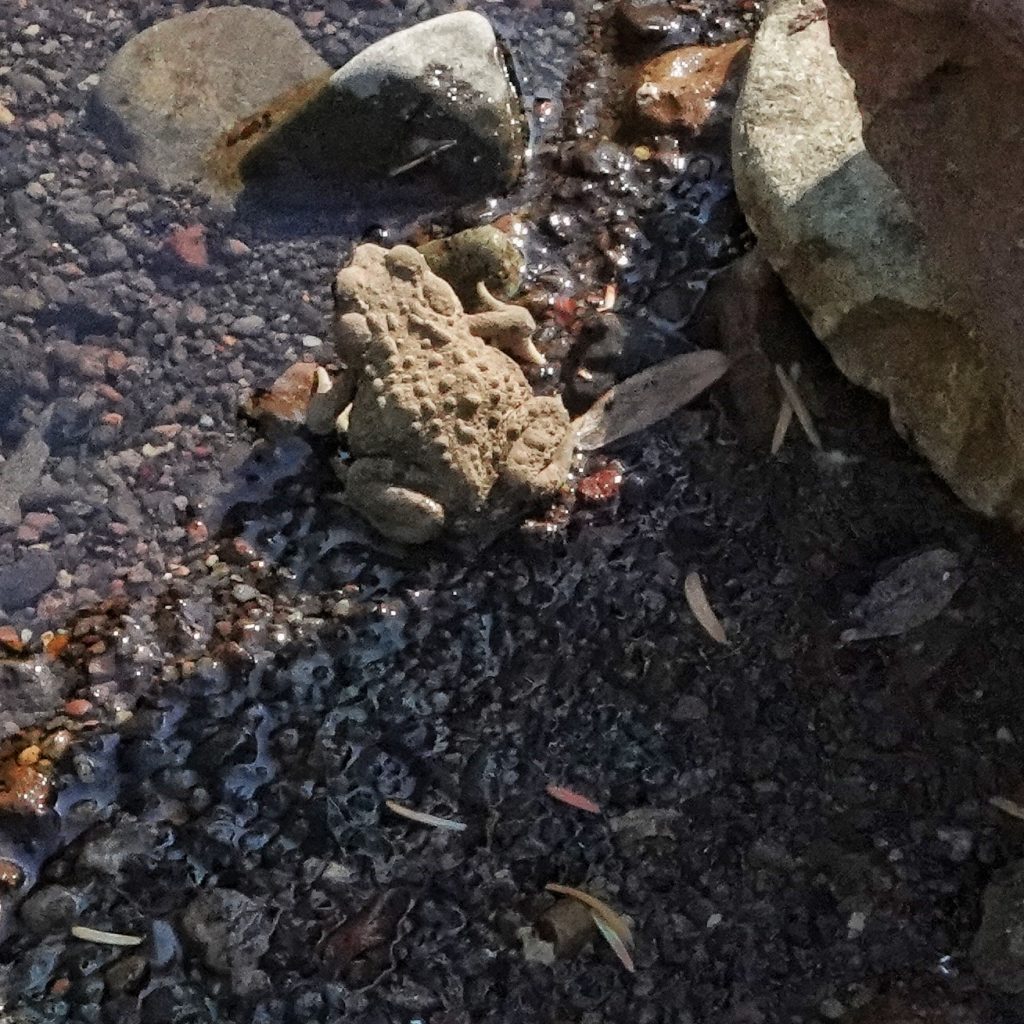
I was disheartened to learn that populations of Western Toads in the US are in steep decline, and that they have been extirpated from large swaths of their native range. The World Conservation Union lists Anaxyrus boreas as Near Threatened, they are a candidate for Endangered Species Act protections, and they are a Species of Greatest Conservation Need in Washington state. Nobody is really sure why their numbers are declining so rapidly, although habitat loss is certainly a factor. But even in pristine areas their numbers are declining. Two factors that seem important are the gaps in the ozone layer, which allow higher amounts of egg damaging UV rays to reach the planet’s surface, and fungal infections of eggs, and especially the two in concert. The fact that these toads are communal breeders and often lay eggs en masse means that a fungal infection can destroy a whole population in a given area. They are also vulnerable to pesticides, heavy metals, and other pollutants.
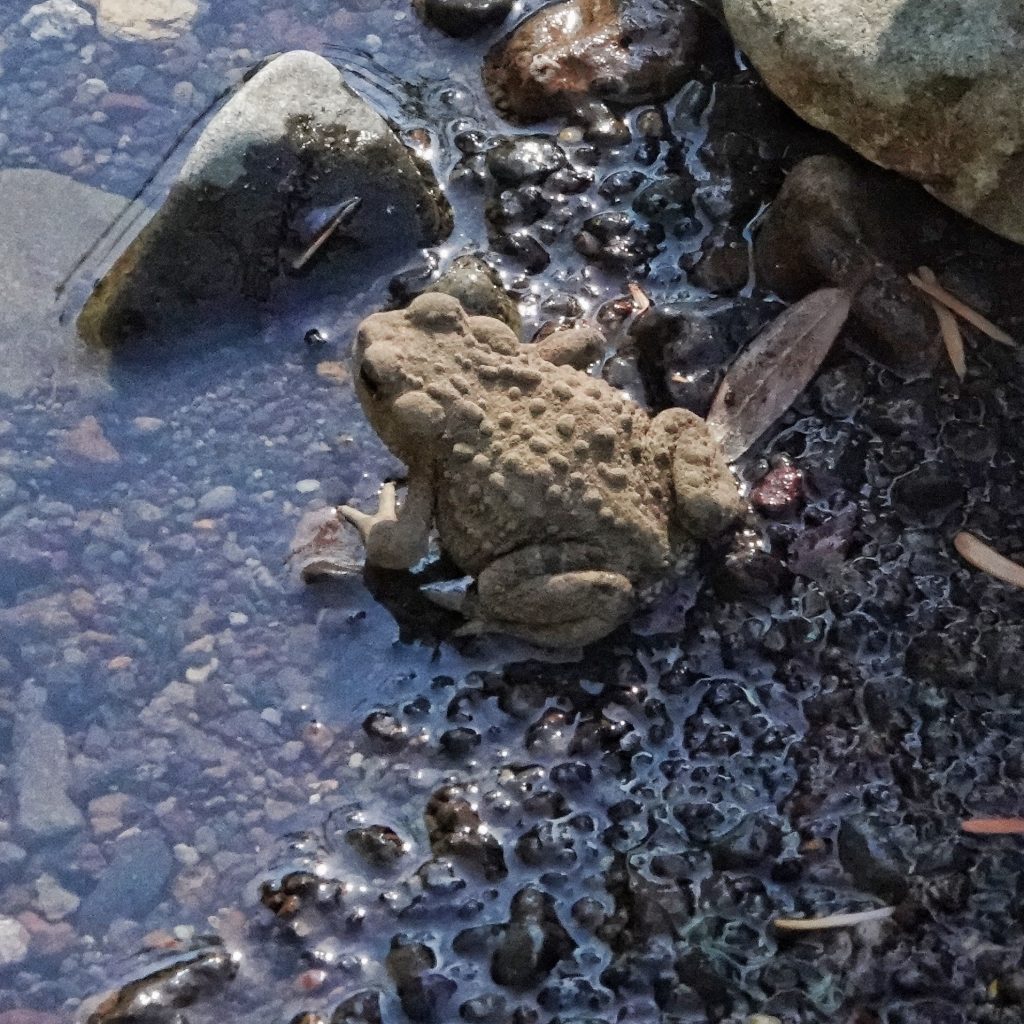
Description-Medium to large (body length 2-5”) grey, brown, green or black toad that may be mottled or relatively uniform in color, except for a light green, cream, or white stripe that runs down the middle of their back from the head to the vent; warts are arranged randomly, and are often a different color than the surrounding skin; parotoid glands are oval; lacks a cranial crest; usually walk or crawl, rather than hop.
Similar species– Woodhouse’s Toads have elongated parotoid glands, and L-shaped cranial crests; Great Basin Spadefoot Toads, and all frogs, lack parotoid glands.
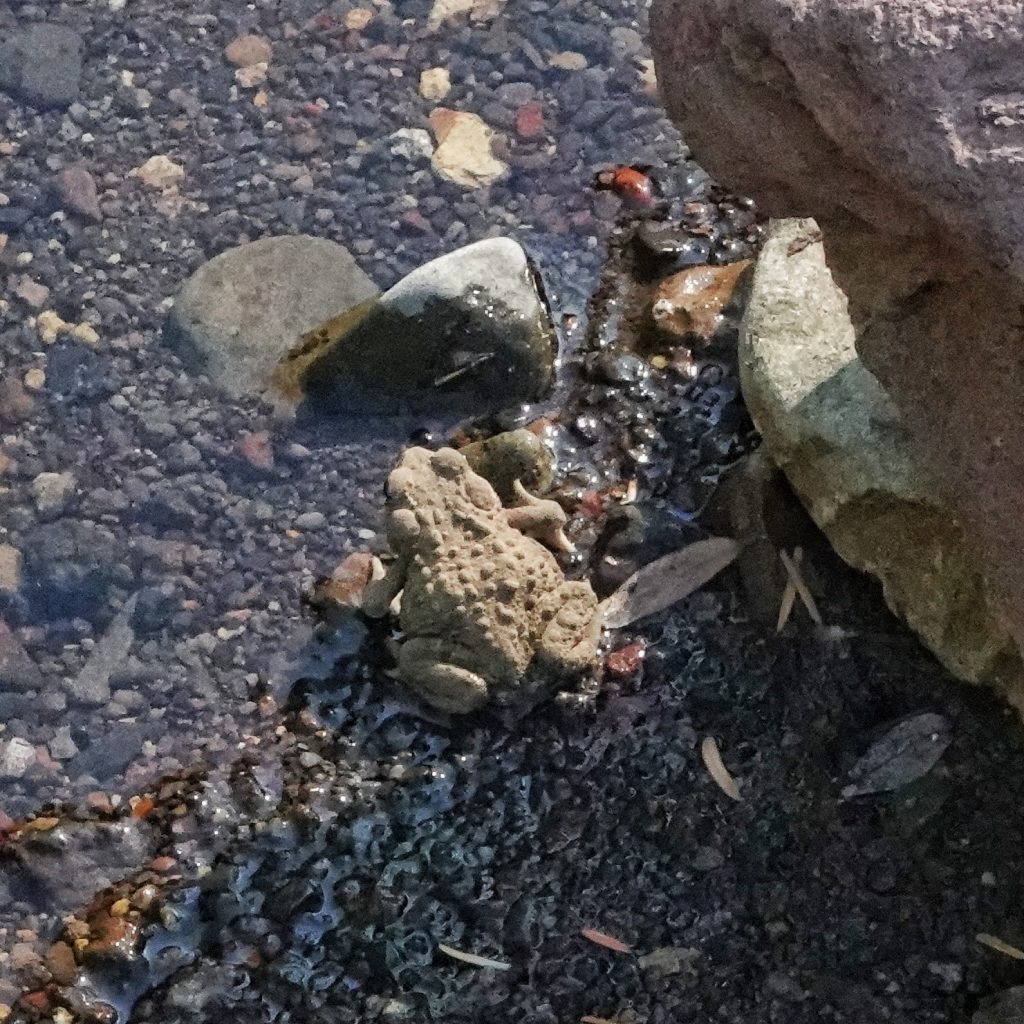
Habitat– Breeding occurs in slow to still waters such as ponds, lakes, permanent wetlands, and sloughs; toadlets and adults may travel some distance from water, and can be found in forests, or other places with logs, vegetation, soft soil, abandoned burrows, and other cover.
Range– Northwestern North America; region wide in the PNW, except absent from the Willamette Valley, Columbia Basin, and parts of se Oregon/s Idaho.
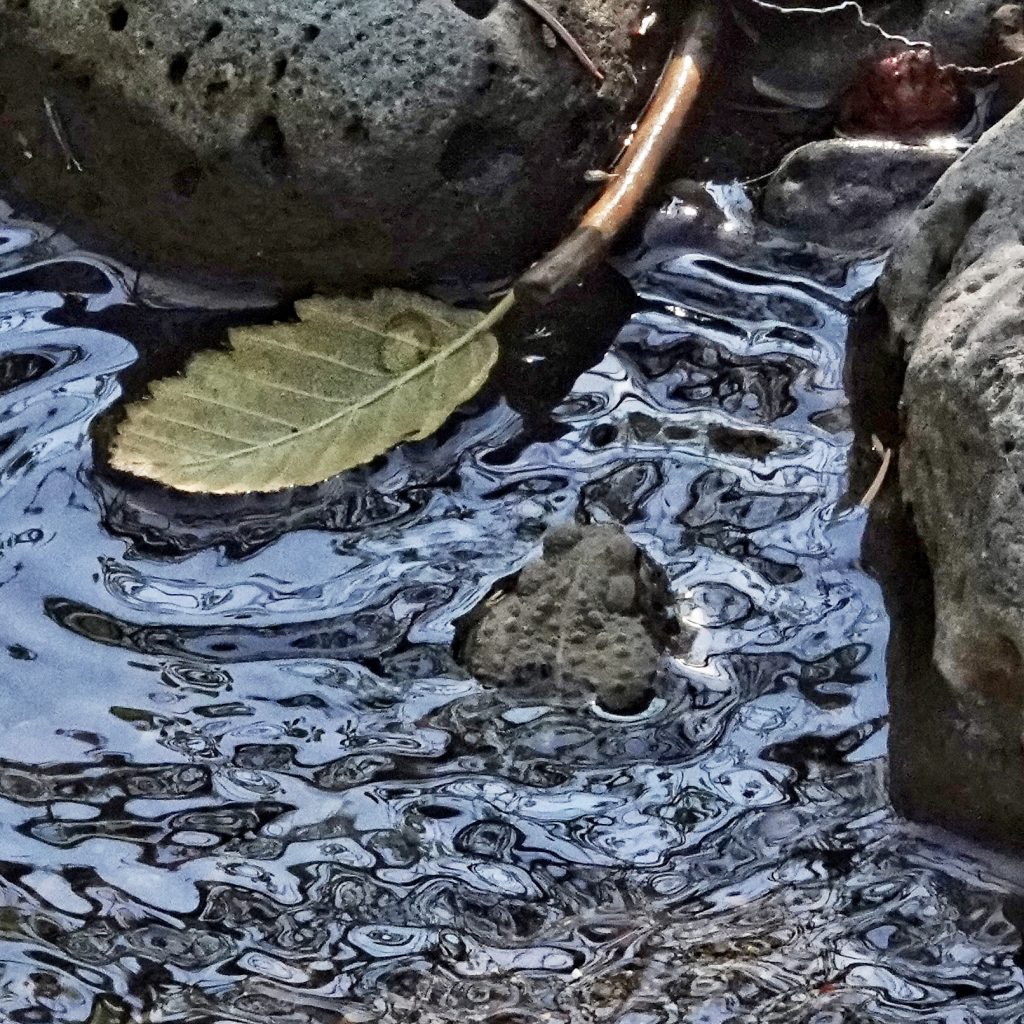
Eats– Tadpoles are primarily herbivorous and eat algae and decaying vegetation; adults are carnivorous and eat insects, spiders, and other arthropods, as well as worms and slugs.
Eaten by– Larvae are preyed upon by arthropods that can penetrate their toxic skin, such as predaceous diving beetles, and certain aquatic Hemiptera, as well as by dragonfly nymphs; adults are prey for raccoons, coyotes, garter snakes, and corvids
Adults active– Tend to be nocturnal at low elevations, and diurnal at high elevations, although at 3,000’ in late August I found 1 at midday, and 1 around midnight; may be active from January through October, depending on elevation, latitude, and conditions; overwinters in hibernation in burrows and other underground havens.
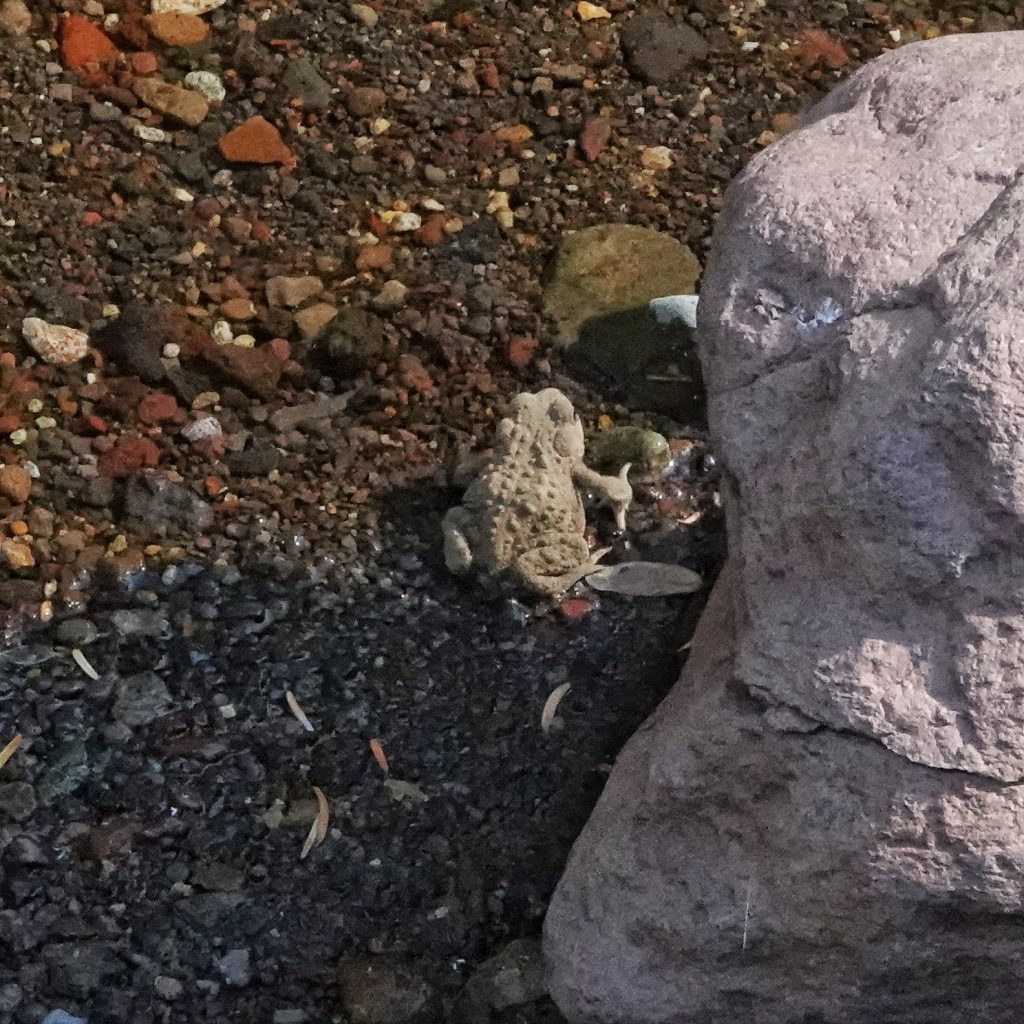
Life cycle– Breeding occurs from January through July, depending on elevation and latitude; black eggs are deposited in the water in dual strings, and clutches contain from a few thousand to over 17,000 eggs; eggs hatch in 3-12 days, and tadpoles may form huge schools; metamorphosis occurs in 1-3 months; sexual maturity happens in 2-4 years; some toads may live up to 12 years.
Etymology of names– Anaxyrus seems to be from the Greek word for ‘trousers’, but it may be from the Greek word for ‘king/chieftain’, though I cannot confirm either of these interpretations, nor ascertain what Tschudi was referring to with that appellation. The specific epithet boreas is from the Greek word for ‘north/north wind’, and refers to this being a toad of northwestern North America.
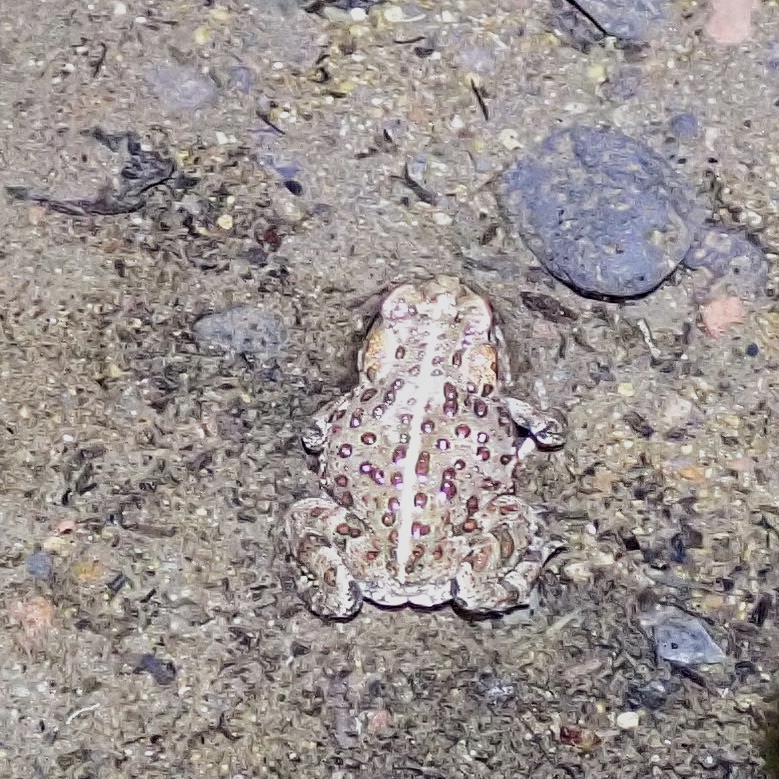
Boreal Toad – Anaxyrus boreas boreas
https://www.env.gov.bc.ca/wld/documents/westerntoad.pdf
https://wdfw.wa.gov/species-habitats/species/anaxyrus-boreas
https://citeseerx.ist.psu.edu/viewdoc/download?doi=10.1.1.1085.9502&rep=rep1&type=pdf
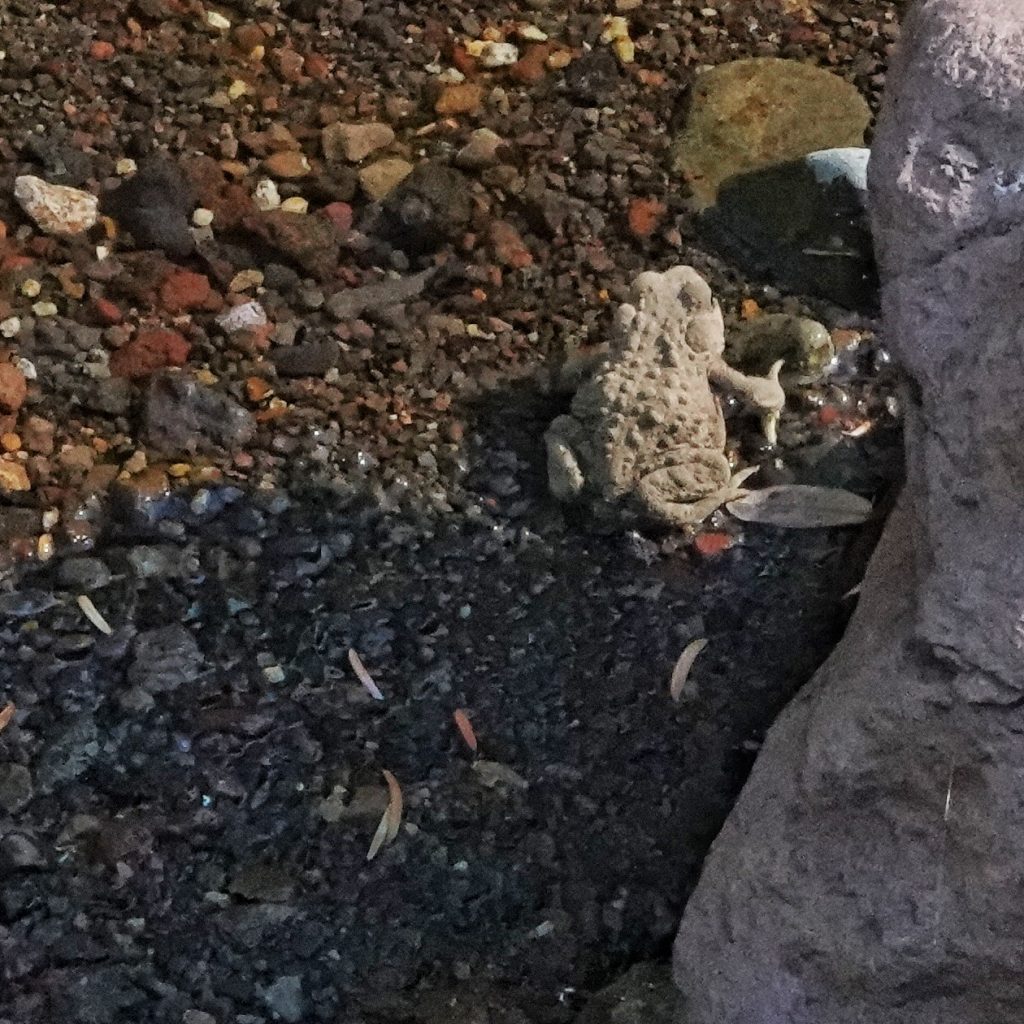
Why do you think they are not found in the Columbia River Basin and the Willamette River Valley?
Great question, Lynn! I wondered that too. Best I could come up with is competition from Great Basin Spadefoots on the east side, and a combination of competition from various frogs (especially bullfrogs of late), plus land clearing and wetlands draining, pollution, and maybe that it is too hot and dry in summer in the Willamette Valley (which could apply to Their absence in the Columbia River Basin and se Oregon as well). But I really don’t know!